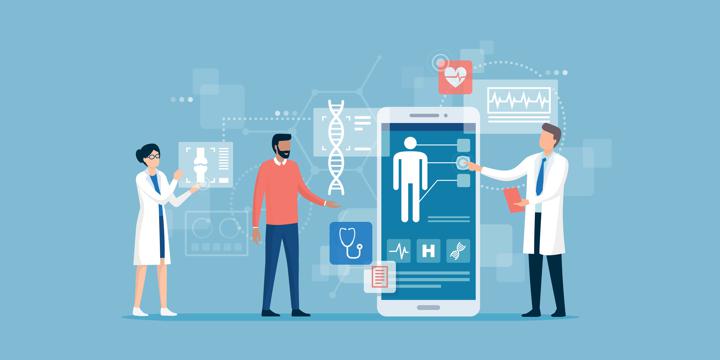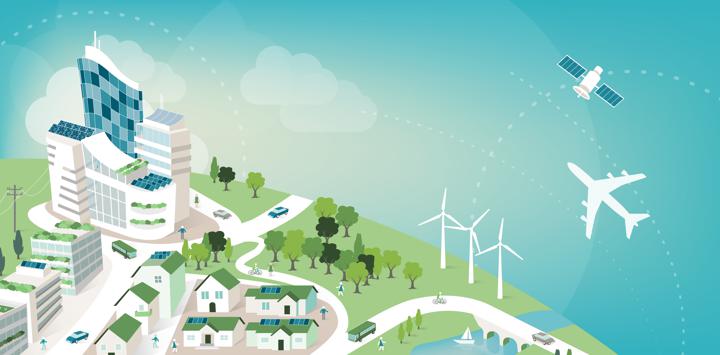
Data analytics has proved to be an effective tool in dealing with a variety of real-world problems and a dependable methodology to make informed business decisions. Continuous advancements in analytics and artificial intelligence are creating intelligent systems that can analyze trends, predict phenomena and even take certain actions that closely resemble what humans would do.
Accordingly, data analytics adoption is growing exponentially across the globe, with many businesses dedicating an increased amount of money and resources to strengthening and enlarging their data analytics capabilities.
While all industry verticals stand to benefit from data analytics, below we’ll look at 11 industry segments that have leveraged data analytics to reap specific gains.
Retail

Retailers have the tough task of anticipating customer demands and ensuring that merchandise is available when required. If they fail to anticipate, their business will likely suffer and be overtaken by the agile competition. Data analytics has helped retailers with business insights that are necessary for keeping their customers happy and returning to their stores. A recent study by a leading computer solution provider mentioned that a large majority of retail businesses confirmed that analytics and the informational insights helped them with a competitive advantage.
Specifically, the application of data analytics can help retailers map customer behavior analytics, improve conversion rates for customers, increase revenue through personalized campaigns, predict and prevent the customer churn, and lower costs of acquiring new customers. Retailers can use data and big data analytics to generate shopping experiences that are hyper-personal and relevant to their customers. This extra attention ensures that their clientele remains highly satisfied.
Banking and Finance
Generally, the banking industry has a conservative outlook and does not take easily to technology for solving their problems and improving their operations. However, this scenario is changing, with more and more banks and financial institutions turning to data analytics to empower their decision-making abilities.
For example, a leading bank created a virtual assistant who could help customers with their verbal queries using natural language processing and predictive analytics. This virtual assistant is designed to learn the information and get more versatile with every transaction. In the near future, the bank aims to train this virtual assistant to study the customer’s banking habits and make relevant financial suggestions at the appropriate times.
Generally, data analytics provides inputs to manage risk, which can help to avoid errors and prevent fraud. This technology creates personalized finance solutions to enhance the customer experience. The integration of data ensures regulatory compliances and improves the profitability of banking operations.
Construction

Construction companies work with significant budgets and large teams, tracking all information ranging from the average time for task completion to expenses for materials. Accordingly, data analytics helps this industry make better decisions and improve operational efficiency.
Specifically, data analytics can help construction companies with the design and modeling of the buildings, incorporating the environmental concerns, and integrating the inputs from stakeholders and the discussions on social media. This analysis can determine the design as well as the location for a future project.
During the building phase, data inputs from seasonal inputs, traffic patterns, community, and business activity could help determine the phases in construction. Data derived from plants and machinery could help analyze the utilization and idle time in order to consider buying and leasing the equipment, optimal use of energy resources, and maintaining a sustainable ecological profile. The study of data helps determine the requirement and streamlining of logistics and availability of consumables with spares.
While operating the finished projects, data analytics could use sensors to check parameters and monitor performance. The study of data can help the building users conform to energy goals by conservation of resources. The sensors could also monitor stress on the structure and trigger maintenance activity to prevent failures.
Transportation
Transportation is a time-critical industry with massive investment in infrastructure. With the help of data analytics, the transportation sector can now work towards making more journeys successful. For example, transport authorities in a large European city use data analysis for capturing customer journey preferences, mitigating unexpected problems and delivering personalized programs to their regular customers.
More specifically, data analytics can help this sector in the management of assets and traffic. One study helped analyze complex engineering data inputs from several sources, which allowed managers to make informed decisions for improving efficiencies. Furthermore, the data helped in the efficient management of deployed assets, delivering a sustainable and dependable network.
Various data sources, such as work logs, field input devices, a variety of sensors, and global coordinates, deliver analytics that help decision making made by both human and automation. The aviation sector also uses data analytics to optimize the management of its assets. The data system automatically collects information from the machinery, such as jet engines, while it is in service via remote networks to schedule maintenance and avoid any failures.
Predictive analysis is used successfully by the public transport authorities for keeping operations functioning smoothly and dealing with congestions. Accordingly, an increasing amount of urban citizens now use public transportation. Data scientists use the significant amount of data generated from the trips to analyze the trends and ensure the efficient resolution of predicaments.
Communications, media, and entertainment

Consumers have an increasing expectation from the communications, media and entertainment industry. They now expect these companies to deliver realistic media in various formats, at their time of choosing, and on several types of devices. Data analytics helps by collecting, analyzing, and applying the insights from consumers to deliver the media as per expectations. Data analytics is also applied to insights through social media and mobile platforms to understand the usage patterns and searches in real-time.
Data analytics helps content providers innovate products. By improving the understanding of their consumers through data analytics, media houses can deliver personalized content and products. To fine-tune their business model, these companies create value by predicting the content, such as movies, music, videos, and games that the audiences would prefer.
Using data analytics, media houses can help create better content for varied types of target audiences. The same science measures the performance of content and creates recommendations for on-demand programming. For example, one of the leading on-demand streaming music services uses Hadoop big data analytics tools for collecting and crunching the data produced by their large user base. This data can help their customers get more accurate personalized music recommendations and regional suggestions.
Advanced data analytics in media and entertainment can help devise methods to project content to their consumers for a highly lucrative business.
Education
The education industry faces challenges to incorporate information from various vendors and sources and run them on platforms that are not designed for sourcing varying types of data. These problems are successfully mitigated by data analytics through the creation of databases and portals.
For example, a leading university in Australia with a large student user base has created a portal for learning management that can keep track of the time when users log-in. The system also tracks the student’s overall progress and logs the time spent on various pages. Data analysis can also help teachers excel by fine-tuning their skills. The system can measure a teacher’s quality of teaching by comparing it with several variables, such as list of subjects, the number of students, aspiration of students, student demographics and similar.
Implementation of data analytics and predictive modeling can impact the marketing of courses and institutions. It can help in structuring the syllabus, monitoring the students’ progress and supporting the studies through a variety of channels.
Today’s education model has several data inputs, such as the record of library access and access to tutorial material and courseware. With modern technology and capabilities, analysis of this data can help teachers and education managers learn student insights and requirements. Learning analytics is a term used for collection, measurement, analysis, and reporting of students’ progress in the course. These solutions use data from several sources and systems, such as the student management system.
Manufacturing and natural resources
Modern living has increased the demand for the supply of naturally occurring resources such as oil and gas, minerals and metals, agricultural produce, etc.. This demand has generated large quantities of complex data. Thankfully, this difficult data is easily handled by big data analytics. Similarly, the manufacturing sector generates a huge amount of data for their various operations.
For the manufacturing sector, data analytics helps with predictive maintenance, quality assurance, product optimization, and streamlining of the supply chain. Predicting the service and life cycle of a component helps in reducing failures and downtime. Automating quality assurance saves time and prevents human errors. This step calls for testing with automatic test devices, X-ray and ultrasound scans, profile projections and similar automation rather than human elements.
Data analytics can help increase product quality and reduce waste, leading to an improvement in overall equipment effectiveness. Optimizing the supply chain helps in the prediction of the correct time for ordering material and shipping finished products to offer scheduled delivery with a minimum of storage requirements. Drilling deeper into the processes and interdependencies, the analysts can provide inputs about the impact of disruptions and transportation issues.
Data analytics and big data help make decisions for the natural resources industry. A large amount of text, images, geospatial data, temporal information, and graphical data are available for analysis. The result of these analytics helps crunch the data and integrate the large datasets. Big data helps in the characterization of reservoirs, interpretation of seismic activities and similar predictions.
For the natural resource industry, data analysis depends on the monitoring of equipment and maintenance of records. These records are available but they were not used to deliver impactful solutions. With the current data technology, these data sources can yield value from these records. In the future, the quality of data, the variety of data sources, and the frequency of data updates are likely to increase, leading to a greater emphasis on the role of big data. This research evaluates the challenges and opportunities for leveraging Big Data and Analytics in the extraction and natural resources industries.
Medicine

The medical industry uses data analytics to significantly improve health and community well-being in a variety of ways. For example, the application of trackers worn on patients’ bodies collects critical information about their health and helps physicians to make better medical decisions for the patients. These wearable trackers provide additional inputs of whether the patient is doing suggested exercise, taking the prescribed medication and following the intended treatment plan. The study of data can start with personal devices that can also help gather data about a healthy person’s lifestyle, and then potentially help them when a medical issue occurs.
Over time, this compiled information provides physicians with comprehensive data on the patients’ wellbeing and helps them to collect specific data that would be otherwise impossible to gather during the brief in-person visits by the patients. Data analytics can also improve predictions for health care requirements to improve staffing levels and functions. Another application is in the creation and maintenance of Electronic Health Records, which can place all the patient data points on an electronic platform, with easy access across the internet.
Data analytics also enables hospital managers to improve care and lessen the waiting period. The use of data analytics in medicine is a successful example of how healthcare providers analyze large quantities of data for finding patterns and responding with an appropriate course of action.
Government
Data analytics and big data find several applications in the field of public services. These analytics can be used in the understanding of the financial market, research of health-related fields, conservation and protection of environmental resources, exploration of energy sources, detection of crime, etc.
Data analytics and prediction help the government focus on possible problems prior to them becoming crises. The government uses predictive analytics in a wide range of areas like security, defense, services, health care, governance and similar.
The Social Security Administration (SSA) has to analyze large volumes of social disability claims that are made of unstructured data. Data analytics is now used to easily and speedily process the medical information to detect fraudulent or suspicious claims. Another example, the Food and Drug Administration (FDA), uses data analytics to analyze and map patterns that are related to food-related maladies.
Ultimately, governments can use data analytics to improve decision making. This leads to better transparency and improved efficiency in the management of public issues. Implementing data analytics helps the government discover new services and delivery modes, charting relationships and correlations as well understanding trends from underlying data.
Energy and utilities

The energy and utility sector has always generated large volumes of data, and will continue to generate even more data which serves as raw information for big data analytics. For example, a smart reader for a utility service now collects a data sample every few minutes, whereas previously, this sample was collected only once a day. This increase in data can help improve the study of utility consumption and usage. The results help provide better control over the use of utility infrastructure and mode detailed feedback from the consumer. The analysis of utility data also improves the management of assets and workforce, in addition to identifying and correcting faults at the earliest stage.
Through the use of data analytics of weather data, energy producers can forecast the requirement of renewable energy power generation. The data analytics also helps integrate information about the generation and consumption of energy, location through Geographic Information Systems and the weather. The analysis also helps in the management of generation and distribution assets. The use of big data helps energy producers predict failure probability and outages. Data analytics also helps management of grids and prevents thefts and pilferage of energy resources.
Outsourcing sector
Driven by a shortage of skilled manpower and high demand by various businesses, global data analytics and analytics outsourcing services are growing at a rapid pace. Outsourcing organizations are also large-scale users of data analytics services, using data analytics to automate the back-office processes, reduce operational expenses, and shorten the delivery time. A typical company in this sector would use artificial intelligence and machine learning for automating the back-end operations for its clients. These new processes will automatically classify and index the documents, process the PDF files, add name and classify files, automatically discover the documents, use annotation on images for management of inventory, and more.
The science called “data analytics” was named only in 2001. It has taken less than two decades to rise to prominence today. The first industry to use data analytics was the finance sector. They used science to sort and analyze large volumes of data to help companies improve efficiencies and cut losses.
Today, data analytics is omnipresent and nearly all businesses are aiming to reap its benefits. The applications will only increase as data analytics science and techniques become more cost-effective and reliable. The challenge is to monetize data analytics opportunities and work on solutions for each industry segment that deliver custom solutions to the specific business vertical.
